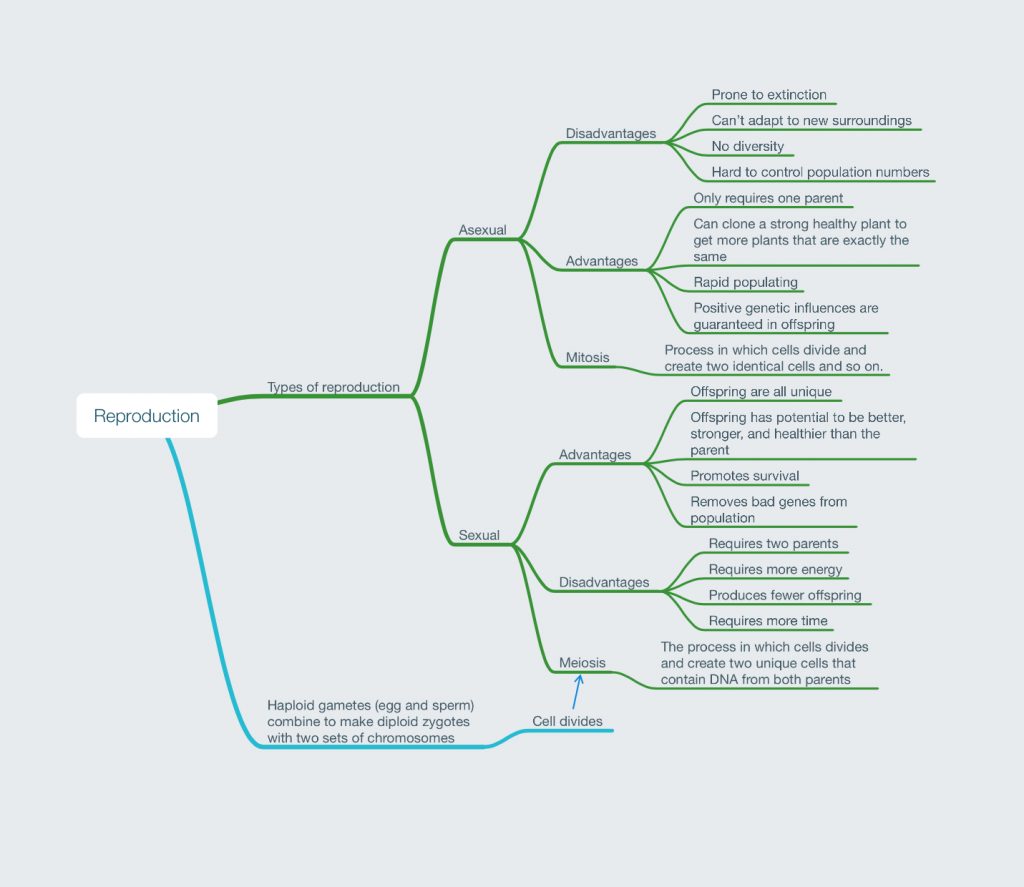Our most recent project in science was a project where we got the chance to clone Dandelions using asexual reproduction. Asexual reproduction is when a plant reproduces without a partner, using a process called Mitosis. Mitosis is when a cell divides, producing two clones of itself and repeating this process over and over until life is formed, which is what happened when we cloned our dandelions. But don’t let this be confused with Meiosis, which is similar, but instead of making clones of itself, each time the cells split they create cells that contain DNA from both the parents and each cell is unique. Asexual reproduction can be beneficial in that it only requires one parent and creates plants that are exactly the same, but there are some downsides. If the parent plant has any weaknesses or mutations, the clones will also possess those bad qualities. Also, if the parent plant can be easily killed by a certain illness or disease, then killing off all of the clones wouldn’t prove to be that difficult. That’s where sexual reproduction comes into play. Sexual reproduction requires two parents which makes it more difficult, but each offspring is unique and contains DNA from both parents.
When cloning our own dandelions, the first step was to plan out a list of materials that we would use. When doings this experiment, we needed soil, one solo cup, some sort of digging tool, scissors, and water. To begin our experiment, we went outside and dug up a dandelion with the roots intact. We took the roots and cut them into five different stocks, each having been cut slanted at the bottom. The reason why we make a slanted cut on the bottom of the piece of root is to help us remember which side should be at the top when we plant the roots. We took out root fragments, poked holes in the bottom of a solo cup, fill it with soil, and plant the roots in the soil. We had five clones in total, and only two of them ended up sprouting. We watered them everyday, giving the ten to fifteen squirts of water depending on how dry the soil was. Although only two of our dandelions sprouted, it’s still pretty amazing that we were able to successfully clone a plant that had the exact same DNA and its parent
Dandelions weren’t the only plant that we cloned using asexual reproduction, we also cloned blackberries with that same process. We started with two blackberry plants, but only one of them survived. I’m not quite sure why, but it might have possibly had something to die with other the temperature in the grow box, or maybe it was a problem with how much water was given to the plant. Whatever it was, we were still lucky to have one of them survive and show significant growth. In my opinion, it was another successful experiment.
All in all, I think that this project was a great learning experience, and taught me some very useful knowledge. The picture above shows a mind map of all the key topics that I learned in this unit.



